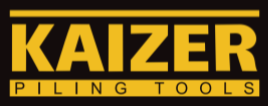Introduction
Pile foundations are essential for transferring structural loads to stable soil layers. This article compares three common foundation types—driven pipe piles, cast-in-situ piles, and CFG pile composite foundations—covering their definitions, construction processes, cost efficiency, and engineering advantages.
1. Pile Foundation Definitions
1.1 Driven Pipe Piles
Precast concrete pipes are sunk into the ground using static pressure equipment (jacketing or top-pressing) until reaching design depth or specified terminal pressure values.
1.2 Cast-in-Situ Piles
Formed by drilling, steel pipe soil displacement, or manual excavation to create boreholes. Reinforced with steel cages and filled with concrete. Subtypes include:
- Driven cast-in-situ piles
- Bored piles
- Manual excavation piles
1.3 CFG Composite Foundation
CFG Piles (Cement-Fly Ash-Gravel):
High-strength columns are formed by cement, fly ash, gravel, and sand mixtures. Combined with inter-pile soil and cushion layers to create composite foundations.
2. Construction Processes
2.1 Driven Pipe Piles
Survey positioning → Pile rig setup → Position verification → Pile lifting/insertion → Verticality correction → Static pressing → Splicing → Continued pressing → Final driving → Quality inspection → Head cutting
2.2 Cast-in-Situ Piles
Site leveling → Hole positioning → Casing installation → Rig positioning → Drilling → Drill extraction → Primary cleaning → Inspection → Steel cage placement → Conduit installation → Secondary cleaning → Underwater concreting → Conduit removal → Pile completion
2.3 CFG Piles
Methods:
- Long auger drilling
- Drill-pump grouting
- Vibratory tube sinking
Process:
Survey → Rig positioning → Drilling → Concrete mixing → Pumping & column formation
3. Foundation Types & Cost Analysis
3.1 Classification
- Shallow Foundations (<5m depth): Isolated, strip, raft, box
- Deep Foundations (≥5m depth): Pile, caisson, diaphragm walls
Common Shallow Foundations
| Type | Characteristics | Applications |
|---|---|---|
| Isolated | Square stepped design, cost-effective | Light steel structures, equipment |
| Strip | Linear, adaptable width | Multi-story buildings |
| Raft | Uniform settlement, high cost | Basement projects |
| Box | Rigid structure, expensive | High-rises, underground stations |
3.2 Economic Comparison
Key metrics:
- Cost per kN bearing capacity
- Total project expenditure
Case Study: Greenland Century City
- PHC pipe piles showed 45.08% cost savings vs. bored piles
- 13.63% more economical than CFG alternatives
4. Recommended Solution: PHC Pipe Piles
4.1 Advantages
Quality Assurance
- Factory-produced (C80+ concrete)
- Rigorous QC vs. cast-in-situ defects (necking, mud inclusion)
Design Flexibility
- Capacity range: 600–3300 kN
- Mixed-diameter configurations for load optimization
Economic Benefits
- Lower material costs
- 57-day total (vs. 115 days for bored piles)
Construction Efficiency
- Enables early excavation
- Reduces dewatering risks
5. Schedule Comparison
| Pile Type | Test Pile | Load Test Wait | Testing | Main Works | Total |
|---|---|---|---|---|---|
| Bored Pile | 7 days | 28 days | 20 days | 60 days | 115d |
| Driven Pipe | 3 days | 7 days | 7 days | 40 days | 57d |
Conclusion
PHC prestressed pipe piles deliver superior cost-performance ratios, quality control, and project timelines for most mid-to-high-rise developments. Their industrialized production and rapid installation make them the optimal choice for modern construction.


